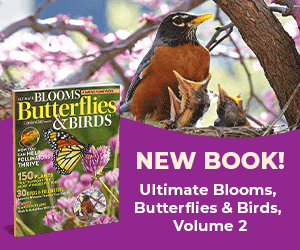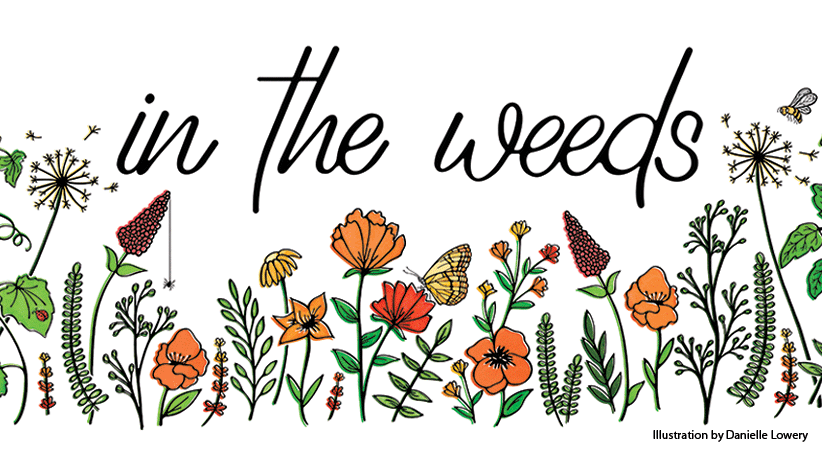The amazing monarch butterfly journey
Did you know that a single monarch butterfly can migrate up to 3,000 miles? That’s a lot of ground to cover! This amazing insect makes a fascinating journey, unlike any other butterfly.
Adult monarchs that hatch in late summer or early fall do not mate or lay eggs — their only job is to migrate south to roosting grounds where they will overwinter. The map below shows the paths they take. Southbound monarchs stop to feed along the way, storing fat that will sustain them for the flight and throughout the winter in their abdomens. In spring, these same monarchs begin the trip back north, laying eggs on milkweed plants in the southern United States before dying. Newly hatched caterpillars feed on the milkweed. When they reach adulthood, they continue the journey north, feeding and laying eggs along the route until the third or fourth generation reaches the home of its ancestors from the previous year.
Help provide habitat for monarch butterflies
This process takes a lot of energy. Loss of wildlife habitat has been detrimental to the monarch, both in nectar plants for adult butterflies and milkweed host sources for feeding caterpillars. Monarch Watch, an education, conservation and research organization dedicated to preserving this butterfly’s population, has established the Monarch Waystation program to encourage home and public gardeners to feed and house these insects along their migration routes. You may already have most of the features of a successful waystation in your garden.

Monarch migration
The red arrows on the map above show how most monarch butterflies migrate south to central Mexico. Those that live in regions west of the Rocky Mountains overwinter in southwestern coastal California. Short days and cool temperatures instigate the trip, which can take up to two months. In their overwintering grounds, they cluster together, awaiting the return of warm weather. In spring they follow the paths indicated by the green arrows.
You Might Also Like:
Watch Our Monarch & Milkweeds Seminar on YouTube!
Butterfly Host Plants
Shop the Butterfly Collection
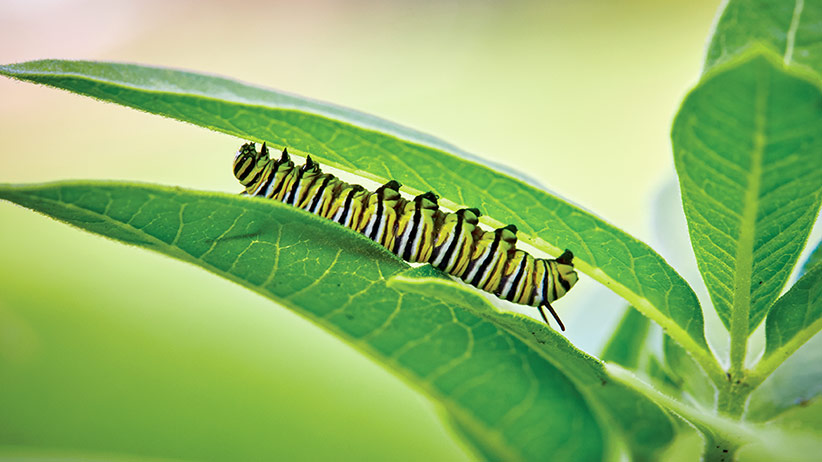
How to establish a monarch waystation
1. Plant at least 100 square feet
Dedicate at least 100 square feet of plants specifically for monarchs to feed and lay eggs on. It can be one continuous space or split up in patches throughout your garden. If you break it up, plant in groups of three or more like kinds of flowers—the larger the planting, the easier it is for butterflies to spot.
2. Grow in the right conditions
Your monarch waystation needs at least 6 hours of sun per day — both for the plants to grow the most flowers and for the butterflies, who rely on sunshine to warm their bodies for flight. Many of the plants butterflies love, such as milkweed, can thrive in poor soil and drought conditions, but appreciate extra water in the heat of summer.
3. Give monarch butterflies shelter
Space plants in the waystation close enough to make it easy for adults and caterpillars to move from plant to plant to feed. But don’t overcrowd: If plants are too crowded, they’re more susceptible to fungal diseases.
4. Make a sustainable plan for your monarch waystation
Choose plants that will thrive in your region and that you can maintain without using pesticides. It is vital that you do not use herbicides or insecticides in your waystation that could harm the monarch caterpillars or adults.
5. Supply a variety of food choices for butterflies
Adult monarch butterflies require a great deal of food as they migrate north and lay eggs, and also for the journey south to their winter home. That’s why it is crucial to provide nectar plants that bloom sequentially all summer, with a big emphasis on fall-bloomers for migrating monarchs to refuel. Here’s a list of annuals and perennials that monarchs favor for nectar:

Annuals to include in a monarch waystation
- Cosmos (Cosmos bipinnatus)
- Lantana (Lantana camara)
- Marigold (Tagetes spp. and hybrids)
- Mexican sunflower (Tithonia rotundifolia)
- Sweet alyssum (Lobularia maritima)
- Verbena (Verbena bonariensis)
- Zinnia (Zinnia spp. and hybrids)
Perennials for a monarch waystation
- Blazing star (Liatris spp. and hybrids)
- Coreopsis (Coreopsis spp. and hybrids)
- False sunflower (Heliopsis helianthoides)
- Mealycup sage (Salvia farinacea)
- New England aster (Symphyotrichum novae-angliae)
- Wild bergamot (Monarda fistulosa)
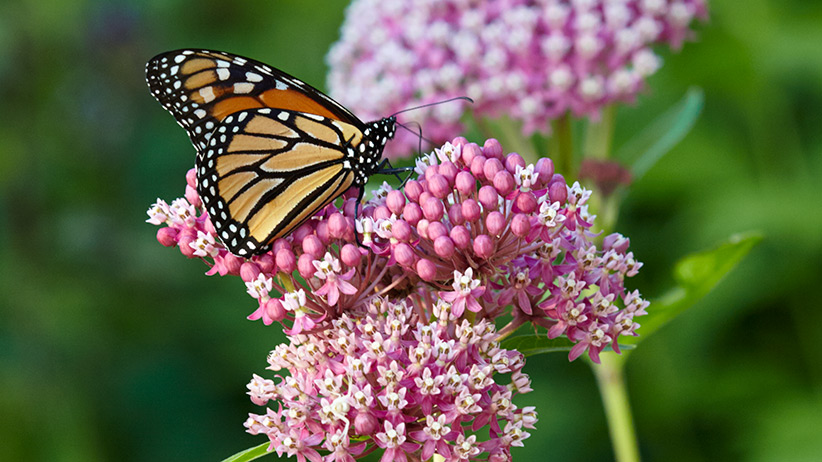
6. Most importantly: Grow monarch butterfly's host plant milkweed!
Finally, a monarch waystation is not complete without milkweed. This plant is the only host to monarch butterfly caterpillars. Grow at least 10 milkweed plants of one species for a waystation. It’s even better to have at least five each of two or more different milkweed species that are native to your region, as they may mature at different times. Caterpillars are voracious and may nearly defoliate the plants, but milkweed is resilient and will recover. You may want to site your monarch waystation toward the back of a flower bed to hide tattered plants. There are lots of milkweeds to choose from. Find species that are native to your region in the chart below to complete your monarch waystation.
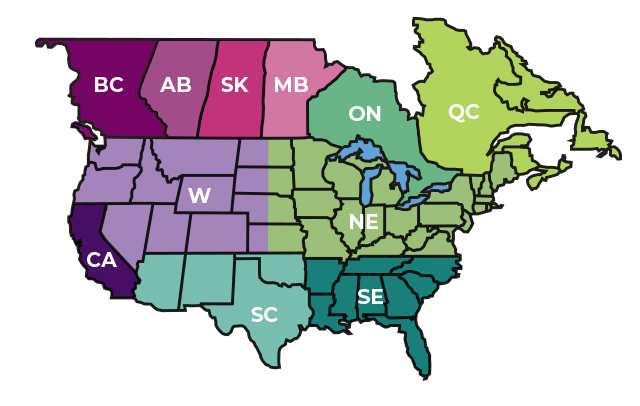
Find your native milkweed
Here is a list of 6 milkweeds and their native regions. Find your region in the map above.
| Name (Botanical name) | Description | Size | Hardiness Zones | Native region See Map Above |
|---|---|---|---|---|
| Antelope-horn milkweed (Asclepias asperula) | Green-yellow flowers in midspring to late fall tinged with maroon give way to curvy seedpods that resemble antelope horns; sandy soil | 1 to 2 ft. tall, 2 to 3 ft. wide | 5 to 10 | Western U.S., South central U.S. |
| Butterfly milkweed (Asclepias tuberosa) | Bright orange flower clusters blooming from early summer to fall top off rough, thin-textured leaves; drought tolerant | 12 to 30 in. tall, 12 to 18 in. wide | 3 to 9 | NE, SC, SE |
| Common milkweed (Asclepias syriaca) | Fragrant pink flower clusters in early summer through early fall; moist, well-drained soil | 24 to 48 in. tall, 9 to 12 in. wide | 3 to 9 | NE, SE |
| Green milkweed (Asclepias viridis) | White to green flower clusters bloom from late spring to early fall; moist to dry soil | 8 to 24 in. tall, 12 to 24 in. wide | 5 to 9 | SC, SE |
| Showy milkweed (Asclepias speciosa) | Pink flowers at the top of the stem and in leaf axils bloom from late spring to midfall; moist, well-drained soil | 2 to 4 ft. tall, 1 to 2 ft. wide | 3 to 9 | W, SC |
| Swamp milkweed (Asclepias incarnata) | Deep, rose-pink flowers bloom from early summer to late fall on branching stems with narrow leaves; moist to wet soil | 3 to 5 ft. tall, 2 to 3 ft. wide | 3 to 6 | W, NE, SC, SE |
Native milkweed seed/plant sources
- Monarch Watch Free Milkweed Programs monarchwatch.org/free-milkweeds
- High Country Gardens highcountrygardens.com
- Prairie Moon Nursery prairiemoon.com
- Prairie Nursery prairienursery.com








